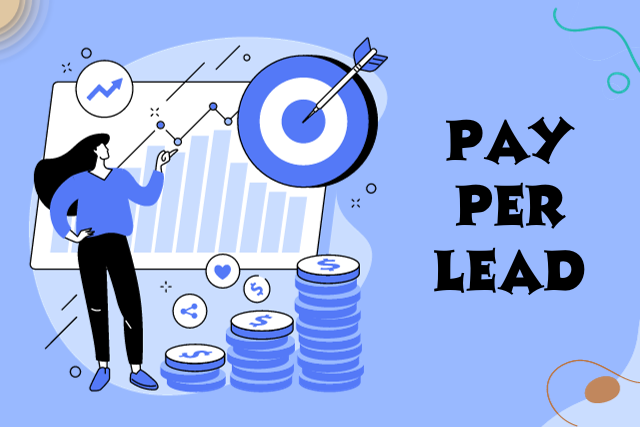In the fast-paced realm of digital marketing, staying ahead of the curve is not just an aspiration; it’s a necessity for businesses striving to thrive in the competitive landscape.
Pay Per Lead (PPL) emerges as a powerful weapon in the arsenal of modern marketers, and in this section, we’ll explore its significance, impact, and the opportunities it unlocks.
Table of Contents
Why Pay Per Lead Matters for Your Business
In today’s data-driven world, businesses cannot afford to squander resources on ineffective marketing endeavors. Every marketing dollar spent needs to yield tangible returns. Pay Per Lead aligns perfectly with this imperative.
Here, we will uncover the unique advantages and intricacies of Pay Per Lead, setting the stage for a deeper dive into its workings and applications. Whether you’re a seasoned marketer or a business owner looking to explore new avenues, Pay-per-lead offers a promising path toward greater efficiency and ROI.
Stay tuned as we unravel the power of pay-per-lead and its potential to reshape your marketing strategy.
What is Pay Per Lead (PPL)?
At its core, Pay-per-lead is a performance-based marketing model. Instead of paying for advertising impressions or clicks, businesses only pay when they receive a qualified lead.
These leads are individuals or organizations that have expressed genuine interest in a product or service and have the potential to become paying customers.
The Mechanics of PPL
To comprehend PPL fully, let’s break down its mechanics:
- Lead Generation: PPL begins with lead generation efforts. These can encompass various strategies such as content marketing, email campaigns, or social media advertising. The goal is to attract individuals who fit the target audience profile.
- Lead Qualification: Not every lead is equal. Effective PPL campaigns involve lead qualification processes to ensure that the leads are genuinely interested and have the potential to convert. This qualification stage often includes assessing factors like demographics, behavior, and engagement.
- Pricing Structure: PPL operates on a unique pricing structure. Instead of a flat fee for advertising space, businesses pay a predefined amount for each qualified lead generated through their marketing efforts. This pricing model aligns marketing expenses directly with results.
Differentiating PPL from Other Marketing Models
In the vast landscape of marketing models, it’s essential to distinguish PPL from other prevalent approaches like pay-per-click (PPC) and Pay-per-impression (PPI).
PPL vs. PPC
- PPL Focus: PPL focuses on generating leads that have expressed a genuine interest in a product or service. It’s about quality over quantity.
- PPC Focus: PPC charges businesses for every click on their ads, irrespective of whether the click leads to a qualified lead or a conversion.
PPL vs. PPI
- PPL Focus: PPL only charges when a qualified lead is generated. This ensures that the marketing budget is spent more efficiently.
- PPI Focus: PPI charges based on the number of times an ad is displayed, regardless of whether it leads to any action.
The Role of PPL in Modern Marketing
The digital era has revolutionized marketing, emphasizing data-driven decisions and measurable outcomes. PPL aligns perfectly with this paradigm by providing businesses with a clear return on investment (ROI) for their marketing spend.
In the modern marketing landscape, where precision and efficiency are paramount, PPL emerges as a vital tool for businesses aiming to optimize their lead-generation efforts. As we progress through this article, we’ll explore how PPL can be harnessed to benefit businesses of all sizes and industries.
Advantages of Pay Per Lead

Here, we’ll delve into the myriad advantages that Pay Per Lead (PPL) offers to businesses, making it a potent weapon in the modern marketing arsenal.
Cost-Effective Lead Generation
One of the standout advantages of PPL is its cost-effectiveness. Traditional marketing approaches often involve significant upfront expenses, with no guaranteed returns. PPL, on the other hand, shifts the paradigm.
- Targeted Investment
With PPL, your marketing budget is allocated specifically to generate leads with the highest potential for conversion. You’re not paying for ad impressions or clicks that may or may not lead to qualified prospects. This targeted investment ensures that your marketing dollars are efficiently utilized.
- Pay Only for Results
In the world of PPL, you only pay when a qualified lead is generated. This means you’re not bearing the financial burden of advertising without results. Your expenditure aligns directly with the success of your lead generation efforts.
Quality Over Quantity: Targeted Leads
In today’s competitive business landscape, it’s not just about the number of leads; it’s about the quality. PPL emphasizes quality over quantity by focusing on leads who have expressed genuine interest in your product or service.
- Enhanced Conversion Rates
With PPL, you’re capturing leads who are more likely to convert into paying customers. These leads have taken a specific action that demonstrates their intent, whether it’s signing up for a newsletter, requesting a quote, or downloading a whitepaper.
- Reduced Wastage
Traditional marketing models often result in wasted resources on leads that are unlikely to convert. PPL minimizes this wastage by ensuring that your marketing efforts are directed toward those who are genuinely interested in what you offer.
Measurable ROI with PPL
In an era where data-driven decisions reign supreme, PPL stands out for its ability to provide a clear and measurable Return on Investment (ROI).
- Transparent Performance Metrics
PPL campaigns offer transparent performance metrics. You can easily track the number of qualified leads generated, their conversion rates, and the revenue generated from these leads. This data allows you to make informed decisions and optimize your marketing strategy for better results.
- ROI Calculations Made Easy
Calculating ROI is a breeze with PPL. Since you only pay for results, determining the return on your marketing investment is straightforward. This clarity empowers businesses to allocate their budget effectively and scale successful campaigns.
Flexibility and Scalability
PPL is adaptable to businesses of all sizes and industries. Whether you’re a startup looking to generate your first leads or a large corporation aiming to expand your customer base, PPL can be tailored to suit your needs.
- Scalable Lead Generation
PPL grows with your business. As your operations expand, you can scale your lead generation efforts accordingly. Whether you need a steady stream of leads or want to launch a targeted campaign, PPL provides the flexibility to adapt to your requirements.
- Suitable for Diverse Industries
PPL isn’t limited to a particular industry. It’s successfully employed in sectors ranging from finance to healthcare, B2B to B2C. This versatility makes it a valuable asset for businesses across the board.
In the upcoming sections, we’ll explore how to implement PPL effectively, strategies to maximize ROI, and real-world success stories that highlight the transformative potential of this marketing approach.
Implementing Pay Per Lead
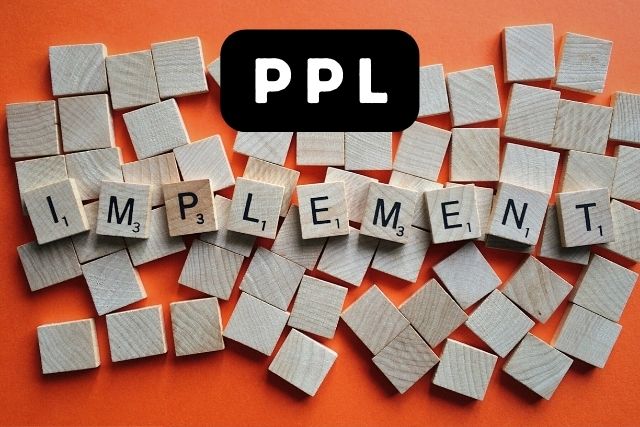
Now that we’ve explored the advantages of pay-per-lead (PPL), it’s time to roll up our sleeves and delve into the nitty-gritty of implementing this dynamic marketing strategy. Implementing PPL effectively can be the difference between a successful campaign and one that falls flat.
Choosing the Right PPL Strategy
- Defining Your Objectives
Before you embark on your PPL campaign, it’s crucial to define your objectives clearly.
What are you aiming to achieve with your PPL campaign?
Are you looking to boost sales, increase brand awareness, or expand your customer base?
Your objectives will shape your PPL strategy.
- Identifying Your Target Audience
Understanding your target audience is pivotal. Who are your ideal customers? What are their pain points, needs, and preferences? A well-defined target audience enables you to tailor your PPL approach to resonate with the right people.
- Selecting the Right PPL Model
PPL offers various models, each with its unique attributes. Common models include:
- Pay Per Lead: You pay for each qualified lead generated.
- Pay Per Click (PPC): You pay when a user clicks on your ad and is directed to your landing page.
- Pay Per Sale: You pay only when a sale is made as a result of the lead.
Choosing the model that aligns with your objectives is critical.
PPL Pricing Models Demystified
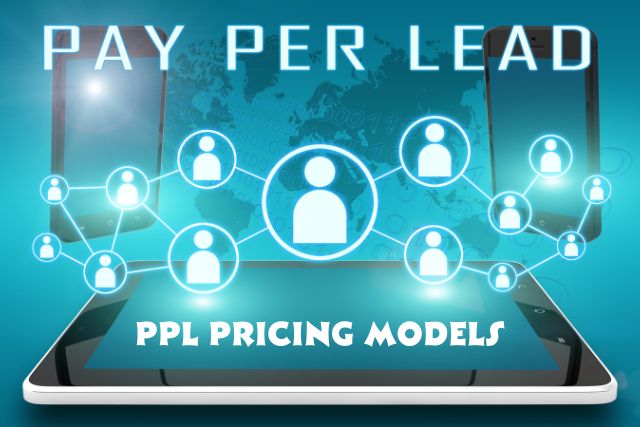
Understanding PPL pricing models is essential to manage your budget effectively.
- Cost-Per-Lead (CPL)
This model charges you a fixed amount for each lead generated. It provides predictability in your marketing spend, making it suitable for businesses on a tight budget.
- Revenue Share
In this model, you share a percentage of your revenue with the PPL provider. While it aligns with incentives, it may be more suitable for established businesses with substantial revenue.
- Hybrid Models
Some PPL providers offer hybrid models that combine elements of CPL and revenue share. These models offer flexibility but require careful evaluation.
Finding the Ideal PPL Agency
Partnering with the right PPL agency can make or break your campaign’s success.
- Assessing Experience
Look for agencies with a proven track record in your industry. Experienced agencies understand the nuances of your market and can fine-tune their strategies accordingly.
- Checking References
Don’t hesitate to ask for references and case studies. This will provide insight into the agency’s past successes and their ability to deliver results.
- Evaluating Transparency
Transparency is crucial in PPL partnerships. Ensure the agency provides regular reports and insights into your campaign’s performance.
Implementing PPL isn’t without its challenges. Understanding and addressing these challenges head-on can set you up for success.
- Lead Quality vs. Quantity
Striking the right balance between lead quality and quantity is a common challenge. Focus on lead qualification to ensure you’re capturing leads with a high potential for conversion.
- Budget Management
Managing your PPL budget can be tricky. Set clear budget limits, track spending diligently, and adjust your strategy as needed.
- Competition
The PPL landscape is competitive. Keep an eye on your competitors and continuously optimize your strategy to stay ahead.
As we move forward in this guide, we’ll explore strategies for maximizing your PPL return on investment (ROI) and uncovering the full potential of this dynamic marketing approach.
Maximizing Pay Per Lead ROI
In the world of pay-per-lead (PPL), success isn’t just about generating leads; it’s about optimizing your strategy to maximize return on investment (ROI). In this section, we’ll explore the key strategies and tactics that can help you squeeze every drop of potential from your PPL campaigns.
Effective Lead Qualification
- Defining Your Ideal Lead
To maximize ROI, it’s essential to have a crystal-clear understanding of what constitutes an ideal lead for your business. Work closely with your sales and marketing teams to define the characteristics that matter most. This might include factors like industry, company size, location, and specific pain points.
- Implementing Lead Scoring
Lead scoring is a powerful technique that allows you to assign a numerical value to each lead based on their likelihood to convert. By prioritizing high-scoring leads, you can focus your resources where they’ll have the most impact, increasing conversion rates and ROI.
Strategies for Reducing PPL Costs
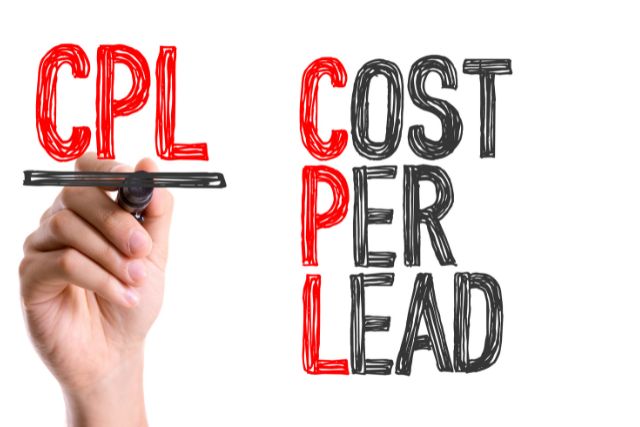
- Optimize Your Landing Pages
A well-optimized landing page can significantly impact your PPL costs. Make sure your landing pages are relevant, user-friendly, and have a clear call to action. This not only improves conversion rates but also increases the quality score of your ads, potentially reducing your cost per lead.
- Leverage Negative Keywords
Negative keywords are a secret weapon in the world of PPL. By excluding irrelevant search terms, you can prevent your ads from showing to unqualified prospects. This reduces wasted clicks and ensures your budget is spent on the most promising leads.
- Geotargeting
If your business serves specific geographic areas, consider using geotargeting to narrow your audience. This can help you avoid paying for leads that are outside your service area, further optimizing your budget.
A/B Testing and Optimization
- The Power of A/B Testing
A/B testing involves comparing two versions of an element, such as an ad or a landing page, to determine which one performs better. By continuously testing and refining your PPL assets, you can incrementally improve your campaign’s performance and ROI over time.
- Testing Elements
Consider testing various elements, including ad copy, headlines, images, forms, and even the placement of your call to action. Small changes can have a big impact on conversion rates.
- Data-Driven Decision-Making
Use data and analytics to guide your optimization efforts. Monitor key metrics such as click-through rates, conversion rates, and cost per lead. Identify trends and patterns that can inform your next steps.
Realizing the Full Potential of PPL
- Scaling Your Campaign
As you fine-tune your PPL strategy, you may find that it’s time to scale up. Explore opportunities to expand your reach, whether through additional ad platforms, increased budget, or new lead sources.
- Staying Updated
The digital marketing landscape is ever-evolving. Stay up to date with the latest trends, technologies, and best practices in PPL. Being adaptable and proactive can keep you ahead of the competition.
In the next section, we’ll dive into real-world success stories that showcase how businesses have harnessed the power of pay-per-lead to achieve remarkable results.
Future Trends in Pay Per Lead
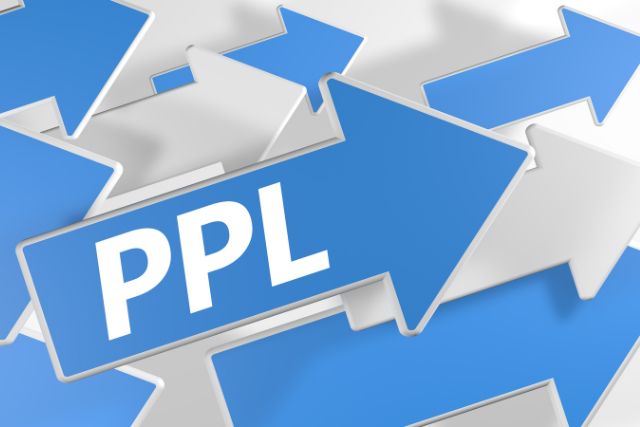
The landscape of pay-per-lead (PPL) is in a constant state of evolution, shaped by technological advancements, changing consumer behavior, and innovative strategies. Here, we will explore the PPL landscape in 2023 and beyond, shedding light on the emerging trends and technologies that will define the future of PPL.
The PPL Landscape in 2023 and Beyond
- The Rise of AI and Machine Learning
As we step into 2023, artificial intelligence (AI) and machine learning are playing an increasingly pivotal role in PPL campaigns. These technologies empower businesses to analyze vast datasets, predict consumer behavior, and optimize lead generation efforts. AI-driven chatbots, for example, are revolutionizing customer interactions, ensuring that potential leads receive timely responses and personalized experiences.
- Data Privacy and Compliance
With data breaches and privacy concerns making headlines, data security and compliance are paramount in PPL. Businesses are adopting stringent measures to protect customer data, and consumers are becoming more conscious of how their information is used. Adhering to regulations like GDPR and CCPA not only ensures legal compliance but also builds trust with potential leads.
Innovations and Emerging Technologies
- Virtual and Augmented Reality
Virtual and augmented reality technologies are finding their way into PPL strategies, particularly in industries like real estate and tourism. Imagine allowing potential homebuyers to virtually tour a property or enabling travelers to experience a destination before booking. These immersive experiences can lead to higher-quality leads and increased conversions.
- Voice Search Optimization
The proliferation of voice-activated devices like smart speakers has given rise to voice search optimization. Businesses are optimizing their content and advertising for voice queries, ensuring they capture leads from users who prefer to speak rather than type. This trend is reshaping keyword research and content creation strategies.
Staying Ahead of the Curve
To remain competitive in the ever-evolving world of PPL, businesses must adopt a forward-thinking approach. Here are some strategies to help you stay ahead of the curve:
- Continuous Learning and Adaptation
Invest in ongoing training and education for your marketing team. The digital landscape is dynamic, and staying updated on the latest trends and technologies is crucial.
- Experimentation and Testing
Don’t be afraid to experiment with new PPL strategies and channels. Conduct A/B tests to determine what resonates best with your target audience and adapt accordingly.
- Collaboration and Partnerships
Consider forming partnerships with technology providers and agencies specializing in emerging PPL trends. Collaborative efforts can yield innovative solutions and access to cutting-edge tools.
As we look toward the future of PPL, it’s clear that staying informed and adaptable will be the keys to success. Embracing these trends and technologies can position your business at the forefront of the ever-changing PPL landscape.
FAQs About Pay Per Lead
In pay-per-lead (PPL) marketing, questions abound, and rightfully so. As businesses and marketers explore this dynamic lead generation model, it’s essential to address the most common queries that arise. This section delves into frequently asked questions about Pay Per Lead, providing clarity and insights for those seeking to harness its potential.
Q. What industries benefit most from PPL?
Pay Per Lead is a versatile model that can benefit a wide range of industries. While some industries have been quick to adopt PPL, others are just beginning to explore its advantages.
Here are a few sectors that particularly benefit from PPL:
- Insurance: Insurance companies can efficiently acquire leads for various types of policies, such as auto, health, and life insurance.
- Real Estate: PPL is ideal for real estate agents and agencies looking to connect with homebuyers and sellers.
- Education: Educational institutions often use PPL to attract prospective students interested in degree programs and courses.
- Home Services: Companies offering home improvement, plumbing, electrical services, and more can tap into PPL for qualified leads.
- Financial Services: Financial advisors and institutions can find potential clients interested in investment opportunities and financial planning.
- Legal Services: Law firms can target individuals seeking legal assistance for various matters.
Remember that PPL can be tailored to suit nearly any industry, provided that the lead generation process can be clearly defined and tracked.
Q. Is PPL suitable for small businesses?
Absolutely, Pay Per Lead is suitable for businesses of all sizes, including small enterprises. In fact, PPL can be particularly advantageous for small businesses with limited marketing budgets.
Here’s why:
- Cost Control: PPL allows businesses to control their marketing costs effectively. Since you only pay for qualified leads, you can allocate your budget wisely.
- Targeted Marketing: PPL enables small businesses to focus their efforts on attracting leads that are most likely to convert, rather than casting a wide net.
- Scalability: As your small business grows, you can scale your PPL efforts accordingly. Start small and expand as you see results.
- Competitive Edge: PPL can help small businesses compete with larger competitors by providing an efficient and cost-effective lead generation strategy.
Q. How can I measure the success of a PPL campaign?
Measuring the success of a PPL campaign is essential to optimize your efforts and ensure a positive return on investment (ROI).
Here are key performance indicators (KPIs) to consider:
- Conversion Rate: Calculate the percentage of leads that converted into customers or achieved the desired action.
- Cost Per Lead (CPL): Monitor the cost associated with acquiring each lead. A lower CPL typically indicates a more efficient campaign.
- Return on Investment (ROI): Evaluate the overall profitability of your PPL campaign by comparing the revenue generated to the campaign’s cost.
- Lead Quality: Assess the quality of leads by analyzing how well they align with your target audience and conversion goals.
- Customer Lifetime Value (CLV): Determine the long-term value of customers acquired through PPL efforts.
- Click-Through Rate (CTR): If your PPL campaign involves online advertising, CTR measures the effectiveness of your ad in driving clicks.
Q. Are there any downsides to using PPL?
While Pay-per-lead offers numerous advantages, it’s essential to be aware of potential challenges:
- Lead Quality: Some leads generated through PPL may not be as high-quality as you’d like. Proper lead qualification processes are crucial.
- Competition: Depending on your industry, there may be fierce competition for the same leads, which can drive up costs.
- Lead Volume: PPL may not always provide a consistent volume of leads, making it necessary to supplement with other lead generation methods.
- Initial Investment: Setting up a PPL campaign can require an initial investment in technology and infrastructure.
- Lead Distribution: Managing and distributing leads effectively can be complex, requiring robust lead management systems.
Q. What are the key factors in selecting a PPL agency?
Choosing the right PPL agency is critical to the success of your campaign. Consider these factors when selecting an agency:
- Experience: Look for agencies with a proven track record in PPL campaigns within your industry.
- Transparency: Ensure the agency provides clear reporting and insights into lead generation efforts.
- Lead Quality: Ask about the agency’s lead qualification processes to ensure you receive high-quality leads.
- Cost Structure: Understand the agency’s pricing model and ensure it aligns with your budget and goals.
- Technology and Tools: Inquire about the technology and tools the agency uses to track and manage leads.
- References and Reviews: Check references and read reviews from other clients to gauge the agency’s reputation.
Selecting the right agency can make a significant difference in the success of your PPL campaigns, so choose wisely.
This section has addressed some of the most common questions and considerations surrounding Pay Per Lead. As you embark on your PPL campaign, these insights will serve as a valuable guide, helping you make informed decisions and maximize the benefits of this dynamic lead generation model.
Conclusion
In pay-per-lead (PPL) marketing, we’ve explored its many facets, from its definition to its implementation, optimization, and even glimpses into future trends. As we conclude this comprehensive guide, let’s recap the key takeaways and underscore why Pay-per-lead matters for your business.
Embracing the Future with Pay Per Lead
The marketing landscape is in a constant state of evolution, and Pay-per-lead represents a pivotal moment in this campaign. Its adaptability, precision, and cost-effectiveness make it a powerful tool for businesses looking to thrive in the digital age.
With PPL, you’re not just capturing leads; you’re nurturing relationships, building brand loyalty, and driving revenue. It’s a holistic approach that aligns seamlessly with modern consumer behavior.
Your Path to PPL Success
To embark on your path to Pay Per Lead success, remember these fundamental steps:
- Understand Your Audience: The foundation of any PPL campaign is a deep understanding of your target audience. Create detailed buyer personas to guide your efforts.
- Choose the Right Strategy: Select the PPL strategy that best suits your business objectives. Whether it’s affiliate marketing, content marketing, or social media advertising, tailor your approach.
- Optimize Continuously: PPL is not a one-and-done endeavor. Regularly analyze data, tweak your strategy, and refine your lead qualification process to improve results.
- Invest in Technology: Leverage the latest marketing automation and analytics tools to streamline your PPL efforts and gain valuable insights.
- Collaborate with Experts: Partner with a reputable PPL agency that understands your industry and can help you navigate challenges and seize opportunities.
Unlocking New Opportunities with PPL
The future of Pay Per Lead is bright, with continuous innovations and emerging technologies. To unlock new opportunities with PPL:
- Stay Informed: Keep a close eye on the evolving landscape of lead generation, including AI-driven solutions, chatbots, and data analytics.
- Experiment and Adapt: Be open to trying new strategies and technologies that can enhance your PPL campaigns.
- Customer-Centric Approach: Focus on providing exceptional value and a personalized experience to your leads and customers.
- Data Security: As data privacy regulations evolve, prioritize data security and compliance in your PPL efforts.
In conclusion, Pay-per-lead has emerged as a game-changer in the world of marketing. Its ability to deliver high-quality leads, measurable ROI, and scalability makes it a formidable tool for businesses of all sizes and industries. Embrace the future with Pay Per Lead, follow the path to success, and unlock new opportunities to grow your business in the digital era.

